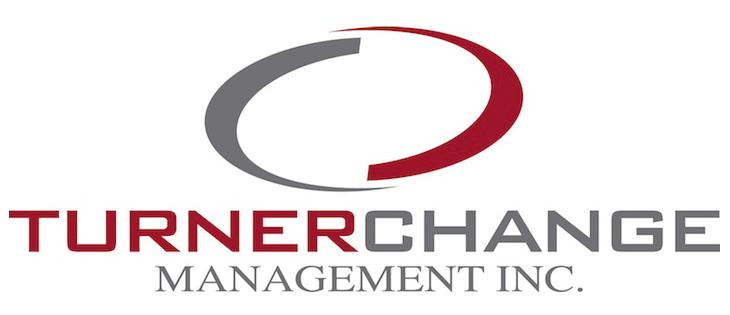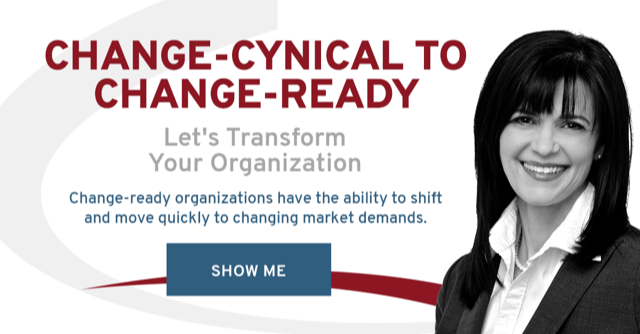3 Ways an Intended Outcome Story Will Help Your Change
Every Change Needs an Intended Outcome
The lack of a clear vision is one of the major reasons organizational change initiatives fail. I agree that every organization should have a vision, but every organizational change needs more than a vision, it needs an intended outcome story.
An intended outcome story is more than a high-level vision statement. It is a clear, concrete, and concise description of your destination. It guides your actions because it describes, the look, feel, behaviours, and activities of your organization/department after the change has been successfully adopted.
 Unlike your organization’s vision that you continually strive toward, an intended outcome represents an end state. It is the new steady-state after the change has been successfully adopted. It is also specific to your change initiative. Once your organization has successfully adopted the change, and the new state is the normal state, your story is complete.
Unlike your organization’s vision that you continually strive toward, an intended outcome represents an end state. It is the new steady-state after the change has been successfully adopted. It is also specific to your change initiative. Once your organization has successfully adopted the change, and the new state is the normal state, your story is complete.
Your intended outcome puts the end result of the change in clear focus for all the people affected. Every organizational change regardless of its size requires a clearly defined outcome. Without a clearly stated and shared intended outcome you are taking your organization on a journey of uncertainty and discomfort with no apparent end.
Picture This
Imagine for a moment that I ask you to take a trip with me. I don’t tell you where we are going, but the trip will involve a very uncomfortable bus ride. The seats are lumpy. The road is unpaved, full of twists and turns, and steep drop off points. The trip will involve lots of starts and stops, you will get little rest and most of the time you will not recognize the landscape.
When you ask where we will be at the end, I tell you I’m not certain, but we need to go. I shouldn’t be surprised when you say an unequivocal no thanks to my invitation. Yet many leaders are surprised. Even worse, they label the people who refuse to take the trip as resistant.
A clear and internalized intended outcome is what gets people on the bus. Having an intended outcome may not make the trip more pleasant. But without one, most people won’t even get on the bus.
Creating an Outcome is Taking Action
Creating a meaningful, concrete outcome story that will help build commitment is more than a word exercise. It is challenging work that takes strong leadership, time and conversation. If you are a leader used to taking quick decisive action you may be tempted to just write something down and send out an email, or skip the process altogether on the assumption that everyone knows the goal. Resist this temptation.Take the time to allow your leaders and employees to engage in the conversations, consider the meaning of the words and understand the impact of the outcome defined. It will be worth effort.
Having a clear outcome helps build trust, support, and commitment for the change. Without a clear outcome, that your employees understand, every decision becomes a debate, creates conflict and insignificant tactical choices dominate discussion and waste time.[i] This is why in our QuickStart program the first step is to define, clarify and confirm participants’ commitment toward an intended outcome. An outcome that is meaningful to each person who will lead and participate in the change.
Three Steps for Defining a Useful Outcome Story
Defining an outcome story for your change is not an isolated activity. It requires the active involvement of those that will facilitate and lead the change. Engage them actively in the conversation. Here are three things you can do to help create a useful outcome story for your change initiatives.
- Confirm the need for the change
- Identify the people that will lead the change and engage them in the conversations needed to understand the new environment
- Document and communicate your intended outcome is clear and concrete language
An intended outcome helps everyone make better decisions. It also helps you plan and keep the change initiative on course. It expands your organization’s intellectual capability – you move beyond just solving a problem to creating a new reality, and a new level of consciousness. It is an essential element for healthy and sustainable organizational change.
Regards,
Dr. Dawn-Marie Turner
Helping you launch, lead and live change more successfully.
This post was updated on August 25, 2017, and was originally published as “Moving beyond vision to outcome”
[i] Kotter, J. P. (1996). Leading Change. Boston, Harvard Business School Press.






Leave a Reply
Want to join the discussion?Feel free to contribute!